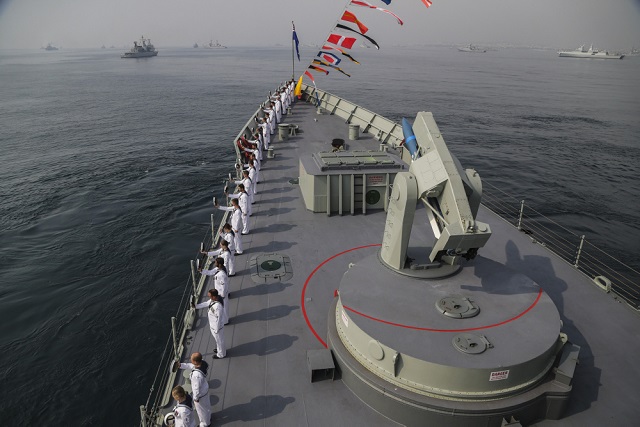Our modern navy needs to be increasingly a national enterprise, bringing together the private and public sectors of the economy to deliver a fundamental national objective—security above, on and under the sea.
That means Navy isn’t just about our ships or our sailors. Our Navy, Australia’s Navy, is also about the national effort required to have a Navy, to maintain it and sustain it.
That national endeavour will ultimately manifest itself in a new industrial landscape for Australia. This endeavour underpins Navy’s approach to continuous shipbuilding.
Continual shipbuilding will draw industry, education, R&D, finance and skills sectors and our Australian and international defence partners together in ways never previously seen. The strategy enables us to ensure we have ships ready for future demands. It allows us to build agility into our system. It allows us to imagine the future and prepare for it.
Indeed, continuous shipbuilding is the system whereby Defence and industry working together are able to generate the innovation that the Prime Minister has identified as central to Australia’s future economic development.
The foundations we lay together (industry, Defence and Government) to build our ships won’t be just concrete and steel. We have an opportunity at this juncture to invest in the Australian people—their ingenuity and their resilience.
Continuous shipbuilding provides the ability to look at analysis, design, construction and sustainment collectively, or, as I would prefer to describe it: thinking, designing and doing, not as a series of sequential activities, but as concurrent activities.
The old way of acquiring ships and planning for mid-life upgrades no longer provides a solution to our larger more complex warships. It’s unmanageable at best. We cannot plan a fleet we cannot afford to build, sustain and evolve through the life of type and into the next generations.
For the first time since we built warships in the country we’ll be building not just for the life of one project, but for sustained capability into the future. I’m already thinking about the next frigate after the future frigate.
Defence is currently negotiating a way forward to reduce the depth of skills loss across the ship building workforce and mitigate against a ‘cold re-start’ after the completion of the current three ship Air Warfare Destroyer program.
If we get this right, future investment by industry will have no deadline or u-shaped valley of death into which CEO’s are expected to charge without an exit strategy for their workforce.
It’ll take a completely different approach to achieve this (acquisition strategies, approaches to industry, investment profiles, infrastructure plans, even class basing)—but it also provides an opportunity to set a new paradigm.
To this end, with respect to our major surface combatants, I see our greatest opportunity existing if we approach our shipbuilding capability as a continuous program of building the fleet of major ships, not just considering each individual project. That’s a true programmatic approach.
At some point in the future we’ll need to consider replacing our Air Warfare Destroyers. We have an opportunity to include that in our calculus now, as we start the first serial in the continuous shipbuilding program that the Government announced on 4 August 2015—our future frigate program.
I aim to hand over to the next CN, and his or her successors, a schedule of ship construction that’s such that their diary will be full of keel laying and commissioning ceremonies, as naval vessels will roll off the production line at a steady drum beat.
As a result, I’m looking for partners in industry that won’t only deliver the required levels of readiness but, will translate cost effectiveness into enhanced readiness. To support that outcome, industry in partnership with the tertiary sector needs to understand the importance of optimising the readiness of the current systems and capturing and managing the required knowledge to support the future system.
Industry needs to understand technology growth paths and the long-term implications of systems and technology providing operational availability at an affordable cost. And industry needs to invest in itself; not just invest for the next project. I call it horizontal enabling—programmatic planning for the long-term.
I cannot over-emphasise the importance of this point, because in my mind it is not just about the first ship to roll off the production line. Rather, it’s about the many generations of ships that will follow in the decades ahead.
This is inherently about availability. Looking beyond the build, we must design with sustainment in mind and build it as a package. This means taking advantage of new technologies and systems, whether they are domestic or from the global market so that they can be integrated into both the build and sustainment activities.
That will enable the continuous building plan to evolve because, while the program will be enduring, the technology will advance. This will be one of this nation’s greatest strategic investment campaigns.
The continuous build plan provides a critical opportunity to reorient our national naval enterprise to address the strategic demands of the 21st century. As I’ve stated before, this is a make or break opportunity—we either realise it together, or we fail together.


